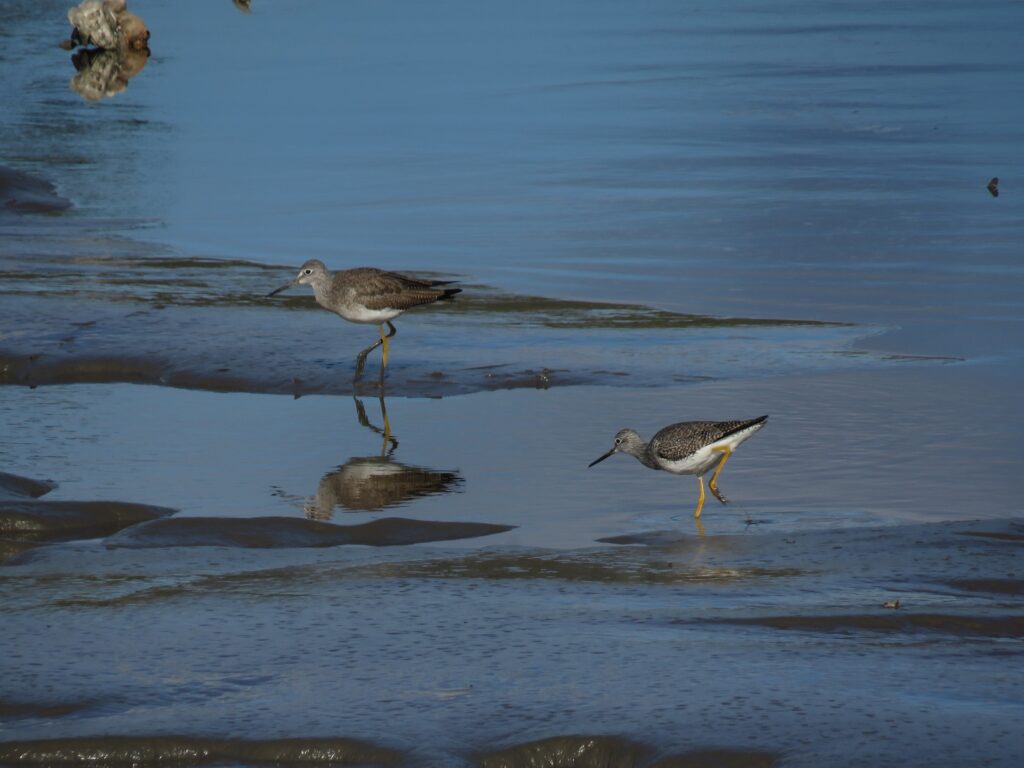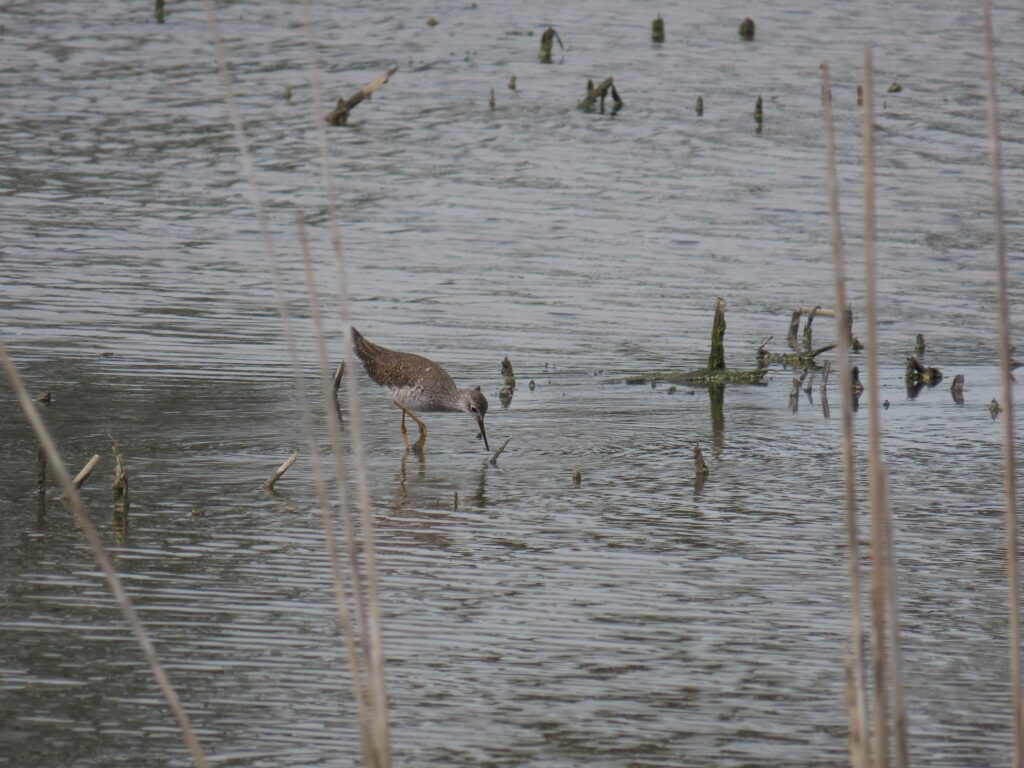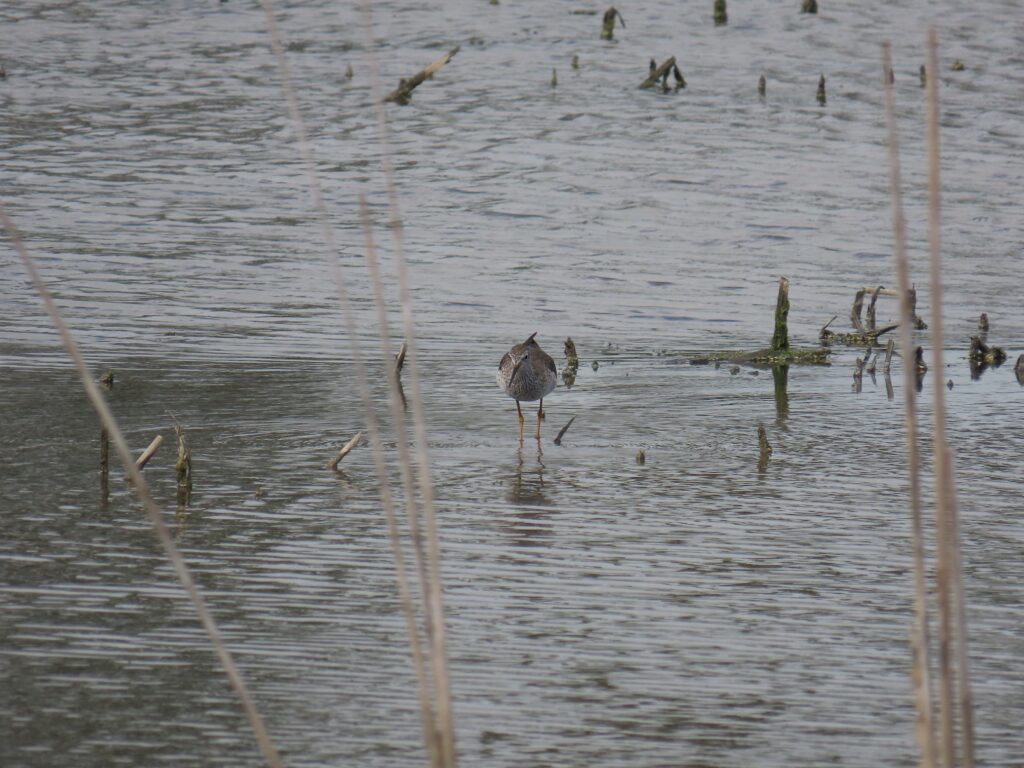
Above: Greater Yellowlegs on left and Lesser Yellowlegs on right.




Top Row: Pair of Greater Yellowlegs on saltwater mudflat.
Bottom Row: Lesser Yellowlegs in managed rice impoundment.
This week for Flora and Fauna Friday it’s a pair of shorebirds prone to perplexing even proficient birders, the Greater and the Lesser Yellowlegs (Tringa melanoleuca and T. flavipes).
Both our Yellowlegs are found across the SC Lowcountry and the Sea Islands in winter. The two species are very similar in appearance but vary in size, habitat, and calls. Yet, that doesn’t mean they’re always easy to identify! Both are lanky shorebirds with a thin white eye-ring, muted brown mantle and wings speckled with small ivory and ebony spots, a white belly, a dark, narrow, medium-length bill, and their namesake long, bright yellow legs. The key visual differences to tell them apart are their bills and the birds’ overall sizes. The Greater Yellowlegs has a slightly longer and heavier bill that is ever so slightly bent upward. The Lesser’s is a touch shorter and straight as an arrow. When stood side-by-side, size is the best way to tell the two species apart. Greater Yellowlegs are head and shoulders taller than a Lesser Yellowlegs, with the top of a Lesser’s head only reaching the shoulders of a Greater. When together, this size difference is pretty obvious but, when on their lonesome, it can be hard to gauge. For further comparison, a Lesser Yellowlegs is close in height to a Dowitcher. A Greater Yellowlegs is about a head shorter than a Willet. The two can also be told apart by their calls. A Greater Yellowlegs gives a sharp, loud, three-note “TuTu-tu” call and the Lesser Yellowlegs a similar sounding, but shorter, two-note “Tootu” call.
Both species occur in similar flat, muddy, open wetland habitats but each have their slight preferences. Greater Yellowlegs are the more abundant of the two in our high salinity salt marshes, mudflats, and beach systems. They are usually seen by themselves or in small flocks of less than a half-dozen birds. They are also common, but a bit less abundant, in brackish and freshwater systems, like rice impoundments, flooded fields, lakeshores, and pond edges. Lesser Yellowlegs are far scarcer in high salinity wetlands and not as common in most freshwater systems. However, they are prolific in brackish marsh systems, especially brackish tidal mudflats, rice fields, and other impoundments. Here they can often be seen in flocks numbering dozens of birds or more and far outnumbering the Greater Yellowlegs. Both species use their long legs to wade into shallow water and their narrow bills to pick out small insects, crustaceans, and mollusks from the surface of the mud and water.